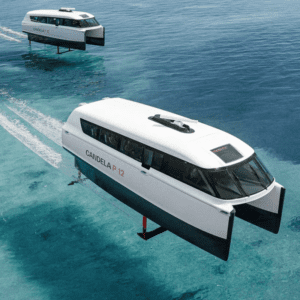In advance of World Space Week, global travel search site Skyscanner released the third and final part of their Future of Travel 2024 report, predicting that the heights of the Earth’s orbit and the depths of the world’s oceans will become vacation destinations over the next decade. Part three of the report, “Destinations and Hotels,” reveals that by 2024 space will be the final frontier for intrepid travelers taking them to the outer edges of our planet’s atmosphere. The report highlights new destinations around the world they’ll be traveling to and predicts how travelers’ social media profiles will enable hoteliers to create a truly tailored experience, based on each individual’s needs and desires.
?
“Taking travel to space will be a ground-breaking milestone for mankind in general, but what’s even more exciting is the transfer of technologies that space exploration can bring to commercial aviation,” said Filip Filipov, Skyscanner’s Head of B2B. “A regular traveler might see a London to Sydney flight in 2.5 hours, which will make travel even easier and faster than ever before, breaking time boundaries.”
Trends shaping the future of destinations and hotels
The report identifies three primary areas that will see dramatic changes in how consumers select their vacation destinations and hotels in the 2020s.
- Traveling up and traveling down: space travel and underwater hotels
- The race for space will initially take travelers to Earth’s low orbit allowing them to experience the stunning curvature of the globe from an ultra-high altitude.
- Looking beyond 2024, space travelers will be able to enjoy the view suspended in sky resorts that will contain zero-gravity spas, space gliders and space observatories where guests can even experience weightlessness.
- While space tourism will become more affordable for the ultra-luxury market, journeys to the bottom of the sea will be a much more mainstream, fashionable option.
- Underwater hotel rooms already exist as niche and novelty destinations, but as space on land becomes more expensive, a new wave of innovators are scaling up the concept aiming to build entire resorts under the waves – including spas, gardens and pools, all with aquarium style-windows allowing guests to go outside in diving gear.
- Hotel rooms of 2024 & hyper-personalisation
- Hotel room walls will be fully interactive and capable of playing films, showing pictures, displaying Skype calls from loved ones and even frosting to provide private work spaces within the room.
- As a response to advances in technology and peer-to-peer travel, hotels will empower guests with incredible levels of hyper-personalization. Travelers will be able to book rooms through their mobile device where everything from the air temperature to shower settings is set specifically for them.
- Authoritative, authentic, collaborative travel will see immense growth by allowing travelers to see their destinations through the eyes of locals. Futurist Daniel Burrus notes that, “social media tools will be used to aid collaboration between travelers and people on the ground in their destination of choice.”
- New destinations to discover for the first time
- Bragging rights will continue to be a key travel motivator in 2024 as travelers will seek unique journeys that make them the envy of friends and family.
- The emergence of ‘forbidden zones’ – areas currently deemed inaccessible by conflict – will become attractive new destinations for tourists to discover. Off the beaten track destinations like Bhutan are already seeing an increase in interest – Skyscanner searches are up 40 percent since 2013 – and are expected to become more fashionable by 2024.
- Alternatively, awareness of endangered species and habitats will drive travelers to view them in their natural habitats before they’re gone.
To read the full report, visit www.skyscanner2024.com, where you will also be able to review sections one and two of the report, launched earlier this year which look at how emerging technologies will change the way we book vacations as well as the impact on airports and the flight experience.
Research methodology
The Future of Travel 2014 is the work of a team of 56 editors, researchers and futures networkers, across key international cities. This team built a detailed picture of the next 10 years, looking at how breakthrough technologies and exciting new destinations will shape the global travel industry in the 2020s. This team explored the travel technologies and behaviors to come, by plugging into the know-how of a range of world-renowned experts, including Futurist Daniel Burrus, author of Technotrends: How to Use Technology to Go Beyond Your Competition, and Travel Futurologist Dr. Ian Yeoman.
The report also drew on the background lessons provided by digital strategist Daljit Singh; Microsoft’s UK Chief Envisioning Officer Dave Coplin; Google Creative Lab Executive Creative Director Steve Vranakis; Kevin Warwick, Professor of Cybernetics at Reading University; and Martin Raymond, Co-founder of The Future Laboratory and author of CreATE, The Tomorrow People, and The Trend Forecaster’s Handbook. The report used The Future Laboratory’s online network, LS:N Global, to supplement research, as well as findings from The Future Laboratory’s annual series of Futures reports on travel, technology, food and hospitality.
From Skyscanner, the following experts were called on for their insights, expertise, and where possible, quoted directly in the report: Margaret Rice-Jones, Chairman; Gareth Williams, CEO and Co-Founder; Alistair Hann, CTO; Filip Filipov, Head of B2B; Nik Gupta, Director of Hotels; and Dug Campbell, Product Marketing Manager.












